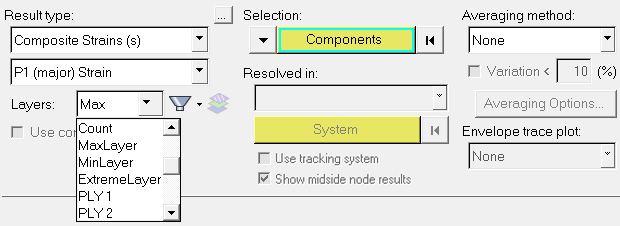Composites Post-processing
Composites post-processing is enhanced in HyperLife with the reorganization of ply results as layers.

You can identify the ply that contributes to a maximum/minimum/extreme condition by setting the ply filter (Entity with layers) to MaxLayer, MinLayer, or ExtremeLayer respectively. The contour plot in this case identifies the ply name that has the maximum/minimum/extreme value for a given result. With the help of the Quick Query context menu, the min/max/extreme value can be identified from the contour plot.
An Envelope loadstep provides a snapshot of results taken from multiple loadsteps. The Envelope trace plot option in the Contour panel allows you to identify the most significant loadstep or a simulation. By changing the layer filter to a given ply, you can identify the most significant loadstep or a simulation in an Envelope condition for that ply. This allows you to identify and perform quick design iterations on the contributing loadstep among a multitude of loading conditions.